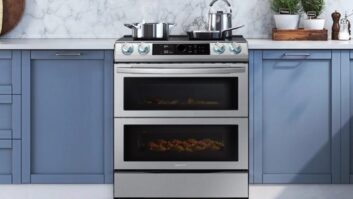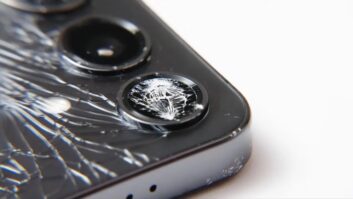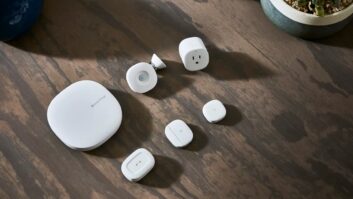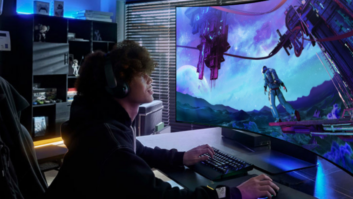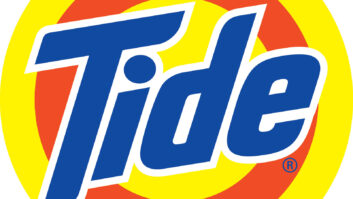Samsung unveiled at a Christmas in August press event, here, a Home Media Center set-top box which integrates bidirectional digital cable reception, standard and high definition digital video recording, music and image playback, voice over IP cable telephony functions, and broadband cable modem service.
The Home Media Center is based on Digeo’s Moxi menu interface software and X-Stream x86 processor. The first iteration of the Home Media Center will be distributed on a lease basis through cable partners, but Samsung is hoping to have a retail version of the device as early as late 2006, after dual-tuner capability has been enabled for bidirectional CableCARD devices.
“Cable in general is a very important issue for us, in terms of trying to enable cable’s quadruple play,” said Stepen Goldstein, Samsung digital set-top box group’s business development manager. “We are one of the few companies that are building everything from an HD DVR Home Media Center to stringing up Wrath servers to enable 4G Networks. These are all things that cable operators are either looking at or currently deploying.”
Samsung and Digeo have been working with cable operators bilaterally outside the highly publicized regulatory environment, he said. Both companies have signed CableCARD-Host Interface License Agreements (CHILA), a bidirectional digital CableCARD agreement with CableLabs, enabling them to build what will be the next-generation of interactive digital cable-ready products.
Under the partnership, Samsung is working to develop fully integrated bi-directional digital CableCARD-enabled televisions that will receive interactive cable television, voice and data services, as well as outboard set-top devices with similar functionality, Goldstein said. Those future devices will also be appropriate for national retail distribution.
Goldstein said Samsung opted to collaborate with Digeo on the next-generation cable devices in order to use its existing technology for onscreen guides, DVR recording and other functions, to bring products to market quicker.
“That way we can focus on what we do well, which is manufacturing and reducing costs,” said Goldstein. He added that Samsung will also leverage its relationship with Digeo to sell into existing cable distribution channels.
To date, over 150,000 Moxi digital set-top devices from other manufacturers have been sold into the market, said Michael Markman, Digeo’s senior marketing director.
The first Samsung Media Center is being developed for distribution through cable multi-system operators (MSOs). It is billed as a two-tuner HD cable receiver, with the conditional access circuitry built into the device. It features standard and HD digital cable reception, standard and HD digital video recording, built-in games and digital image and music playback.
The box is activated through Digeo’s Moxi on-screen graphical menu guide, which uses four-color logos and brands to help users quickly identify channels and programs. The user interface is powered by Digeo’s X-Stream chipset, offering rapid guide navigation and search functions.
The guide offers a large inset screen to continue viewing a program while making guide selections or finding and programming shows to tune or record. The box also includes a DVR powered by a Broadcom 7038 chipset. Different box options will offer hard disc drives of 120GB or 250GB. Also included is a DOCSIS Modem, and WLAN Access Point to allow wireless communication with Samsung WIP 6000 Wi-Fi handsets, laptops or other Wi-Fi-enabled devices.
Digeo plans to have the integrated set-top device available for trials later in the year, followed by deployment in the first half of 2006, Markman said.
Initially, Samsung will deploy boxes through MSO’s Charter and Delta, which will lease them out to their subscribers, Goldstein said.




